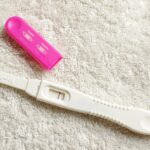One of the best aspects of having a home birth is the time you get to officially prepare your space for it.
By this time, it’s likely you’re starting your nesting habits and are looking for something to do that has to do with your baby anyways.
Of course, who you are individual plays a huge role in what your space will look like – are you the comfy cozy type or the clean and clear type of person. Doing what eases your mind is the key to reducing mental clutter prior to birth.
From the 36th week of pregnancy onward, it’s likely that you’re starting to feel some urges of nesting – roll with these urges – just don’t overdo it with the physical labor it entails to execute plans that form in your nesting phase.
You might wake up one day and feel an intense urge to clean the entire house, and while a clean house is nice, going all-in on those urges can result in you being exhausted unnecessarily.
At the end of your pregnancy, the goal is to save as much energy as possible for labor. That said, let’s get started because nesting can be wonderful, organized, and bring clarity to your vision of the perfect birth for your family.
Your midwife should do a home visit with your prior to your due date
Sometime around my 36th-week of pregnancy my midwives handed me a piece of paper with a birthing kit company on it and told me that I need to visit a homebirth companies website and put together my birthing kit.
View in gallery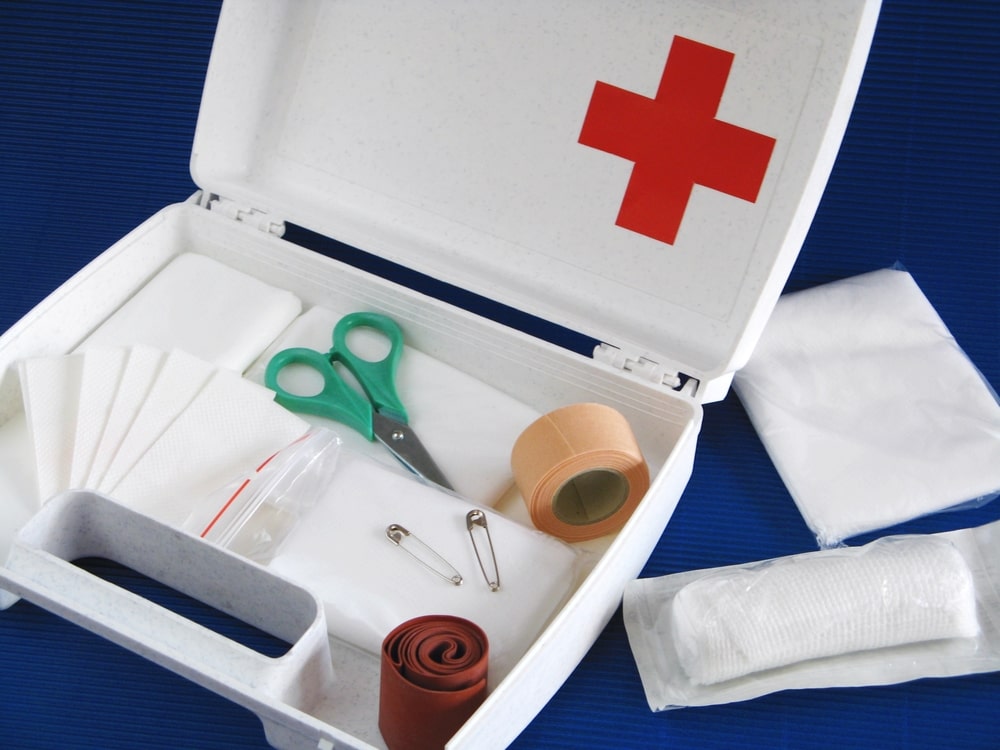
Fortunately, the company that I would be ordering from was local, and I was able to drive with my family to grab my kit – making it a memorable family outing. A home birth kit will include the following supplies more or less:
- 10-20(total) heavy, medium, and light absorbancy underpads
- Maternity briefs your choice of size
- Shaped pads
- Roughly 15 maternity pads for week 2 after giving birth
- Alcohol prep pads
- 1 package of lubricating jelly
- Optional iodine solution 4oz.
- Perineal irrigation bottle
- 36” paper tape measure
- Straws for drinking
- Sterile gloves for your midwives
- Sterile gauze pads 4×4
- A baby hat or 2
- Plastic backed sheets or a plastic covering
- Herbal sitz bath(depending on the company you order from)
These items are a part of a premium homebirth kit, while most of these items are essential a few are optional. The one item that I used the most besides the pads, was the irrigation bottle filled with sitz bath tea which we’ll cover later on.
There are some supplies that your midwives will request you to buy yourself and have ready during labor.
When your midwives come for a homebirth visit, it’s nice for you to have a designated area for your supplies. This helps when you are in labor, you don’t want to be hollering where supplies is in your home.
Your midwives should have full access to anything and everything necessary to help take care of you during your labor.
Where should I store my birthing supplies?
That’s a good question, and there are plenty of answers for this – the right one is right for you. Some people work well with dressers, and some work well with plastic bins. Let’s go over some of the most practical solutions to keeping your home birth supplies together and organized.
A wooden dresser is sturdy and keeps supplies out of sight but available
When I gave birth to my 5th baby at home, I used an old wooden kids’ dresser to organize my supplies. I liked this because it felt secure enough to keep my older children out of, plus, I could store blankets on top of it without it buckling in on top.
View in gallery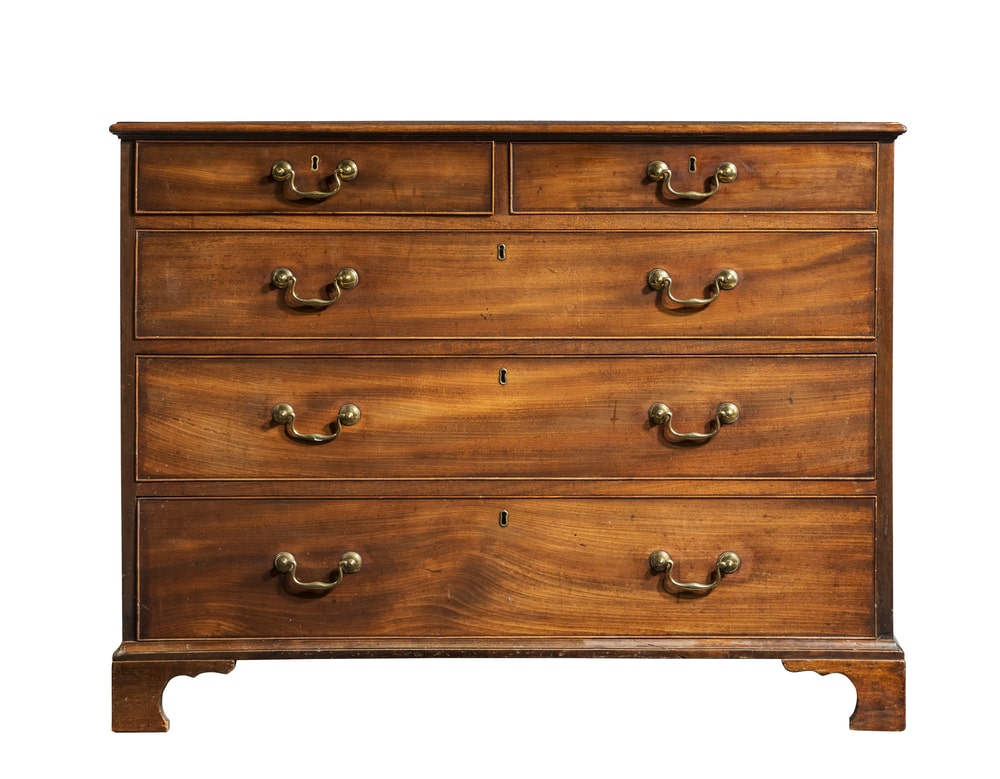
The top drawer was filled with immediate baby items, like newborn diapers, wipes, and baby’s first clothes. The second drawer was filled with pads, receiver blankets, and underpads for my midwives or myself to grab if necessary.
The bottom and last drawer were filled with all other miscellaneous care items; the measuring tapes, umbilical cord tie, peri bottle, and anything else that came in the birth kit that was going to help get the job done.
A plastic 3-drawer dresser helps keep what’s inside the drawers visible
If I didn’t already have a wooden dresser on-hand, it would have been wise to go out and purchase one of those plastic 3-drawer dressers.
Three closed-off drawers seemed to be enough to successfully organize birthing supplies – you don’t want to have all of your babies future clothes in with your medical supplies because that would be overwhelming.
This area is just for your supplies to get you through labor, delivery, and the birth of your baby. If you have other children in your home, you don’t want them to touch all of your supplies – these items are supposed to stay sanitary for your new baby.
Feel free to throw anything else in your dresser that you feel you will need. Just keep it simple and tidy, these items will get you through the first week after having your baby.
Ideally, you won’t have to go far from your bed for the entire first week after you deliver.
You can store your birthing supplies in a plastic tote and have a trash can ready to throw trash or soiled sheets away
I suppose it wouldn’t hurt anything to throw all of your supplies into one plastic tote, and open it up when you go into labor.
A plastic tote will keep thing’s out of the way up until you go into labor. Plus, you can write on the outside of the bins which supplies fill each bin.
One great thing about having a tote is the cleanliness of it, a tote with a lid doesn’t allow dust to gather on top of your supplies while you patiently(or impatiently) await your homebirth.
Get an extra trash can for the room you’ll be laboring in, trash can add up quickly during a homebirth with all of the underpads and other soiled supplies.
View in gallery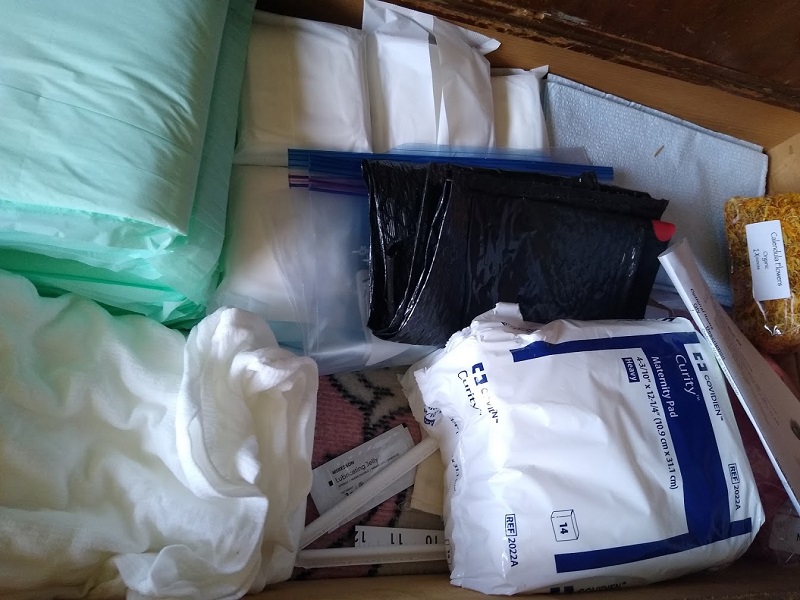
Meal preparation for labor and delivery
The neat thing about preparing for home birth is that you get to choose exactly which items you include in your birthing plan – including the snacks and meals that you’ll be eating. Unlike birthing at the hospital, you can eat anytime you’d like to.
This means that one of the funniest things during labor and delivery preparation is meal planning. If you love to bake at home, this is your opportunity to do so.
Bake some treats and power snacks that you can have throughout labor and delivery
The power nutrients that propel your labor forward are going to be essential when preparing for your labor and delivery. This is what makes the energy remain constant even during more draining times while laboring.
If you’ve ever watched a cat in labor, you’ll understand that labor can be long for them – in turn – humans are similar.
Labor can be long or short depending on many factors; your genes, family patterns of delivering a baby, and more internal factors like your intuition.
Healthy snacks that will assist with your labor mean snacks that include the following vitamins and nutrients;
Iron helps build strong healthy red blood cells
When you’re in labor you’re still continually making red blood cells, in fact, it carries all of the necessary oxygen to your baby. Your brain also needs signals of when to do what, and how to do it in order to birth your baby.
After giving birth to your baby, your body will have a heavy period for a few weeks. During the weeks that follow having your baby, your body needs to redistribute a happy balance of red blood cells.
When you were pregnant your body increased its blood supply by around %50, after having your baby it will lose this and regain its non-pregnant balance. You can help your body avoid anemia if you continue eating iron-rich foods during your labor.
Good food sources of iron are;
- Liver
- Red meat
- Beans – kidney, edamame, chickpeas
- Fortified breakfast cereal
Calcium will help your bones during and after delivery
View in gallery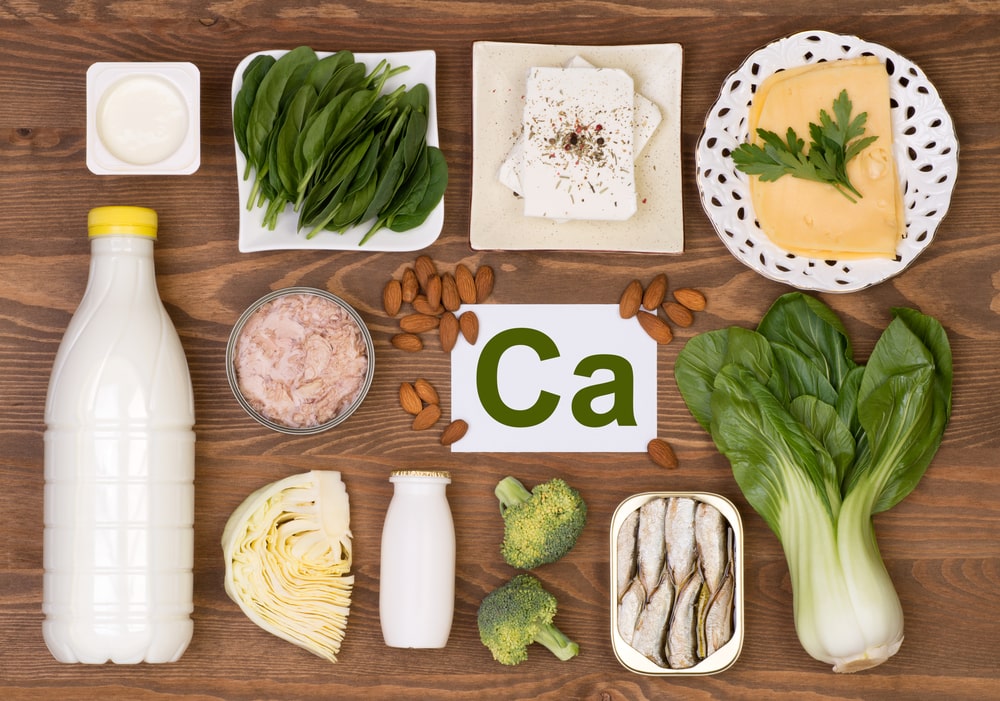
Calcium-rich foods will help your bones stay strong after your pregnancy, after giving birth your body will be focused on healing other aspects of your body.
So giving your body adequate calcium supplies will ensure your skeletal body stays strong and healthy.
A few important things that calcium will help you do during labor and delivery have effective contractions and making sure your blood clots the right way.
Good sources of calcium in your food are;
- Milk, cheese, and eggs
- Soya drinks that contain extra calcium
- Fortified flour provides a good amount of calcium so anything that has that in it
- Fishbones – sardines or pilchards
Vitamin A helps your eyesight throughout pregnancy
It’s even more important to eat vitamin A-rich foods during labor and after giving birth. This will help your eye function remain healthy, and your immune system function. Vitamin A is crucial to good immune function during and after having your baby.
Good food sources of Vitamin A include;
- Eggs
- Cheese
- Milk and yogurt
- Yellow, red, and green leaf vegetables like spinach
Vitamin C will help ward off infections before and after labor and delivery
You should continue taking a prenatal throughout labor and after you have your baby, for as long as you possibly can.
But if there is one vitamin I recommend supplementing after you’ve had your baby – it’s vitamin C – it will help keep any possible infections at bay.
Mastitis is an infection within the mammary glands of your breast – vitamin C is one way to ensure any possible mastitis infections don’t get out-of-hand.
It has been the cure-all for mastitis for me, and it’s pretty common among postpartum mothers to come down with a case of mastitis.
Your breasts will be quite engorged directly after giving birth more than any other time during your breastfeeding journey. It’s a good idea to keep your vitamin C levels high during your time of breastfeeding.
Good food sources of Vitamin C in your diet include;
- Brussel sprouts, broccoli, and potatoes
- Peppers
C - Citrus fruits like oranges, currents, or strawberries
Vitamin D helps your body continue to absorb calcium and assists in your overall mood
View in gallery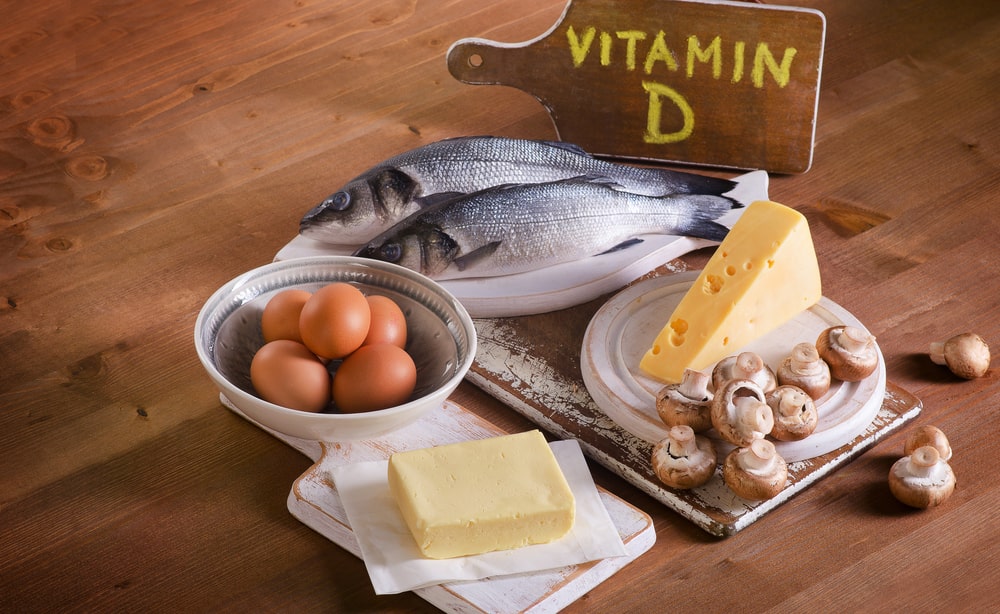
Everyone knows of vitamin D as the sunshine vitamin, and in the weeks following giving birth you might not get out in the sun a lot.
In fact, most mothers will find themselves in their bed the first few months after giving birth more than any other time in their lives.
Vitamin D will help ease your emotional storm that surely follows many women’s birth, and help your brain sustain such a big change in your life.
Not only will Vitamin D help relieve any postpartum depression, but it actually will help prevent preterm labor, and birth or postpartum infections if you take up to 4,000 IU’s a day.
To get enough Vitamin D you should be supplementing around 40IUs a day, which is equal to 10 micrograms a day.
Another great way to get a dose of Vitamin D – is to get outside under the sunshine in the months of late March to early April. When out in the sun, try to have as much bare skin revealing to the sun.
Keep in mind that between the months of October to early March you won’t be able to get enough vitamin D from direct sunlight since the sun shines less during this time of year in most regions.
Good food sources of vitamin D in your food choices are:
- Fish that contain high oil content – salmon, sardines, mackerel
- Liver
- Eggs yolks
- Some fortified foods have vitamin D too(breakfast cereals or buttery spreads
Vitamin B6 will help your body absorb protein and more
Your laboring body needs a lot of protein to get through all of the muscular action required to push your baby down and out of your body. The abdominal muscles do a lot of work and will be sore for weeks after having your baby.
B6 is an essential vitamin that helps your body absorb protein as needed throughout labor and delivery. You’ll need to ensure you’re getting plenty of B6 before, during, and after labor.
Good sources of vitamin B6 include the following pork, chicken, and turkey.
Good plant-based sources of vitamin B6 include the following;
- Avocado, nuts, and seeds like pistachios
- Wheat germ and quinoa
- Corn on the cob, Brussel sprouts, and squash
- Tahini or sesame seeds
Vitamin B12 helps your body produce new red blood cells and maintains your nervous system
View in gallery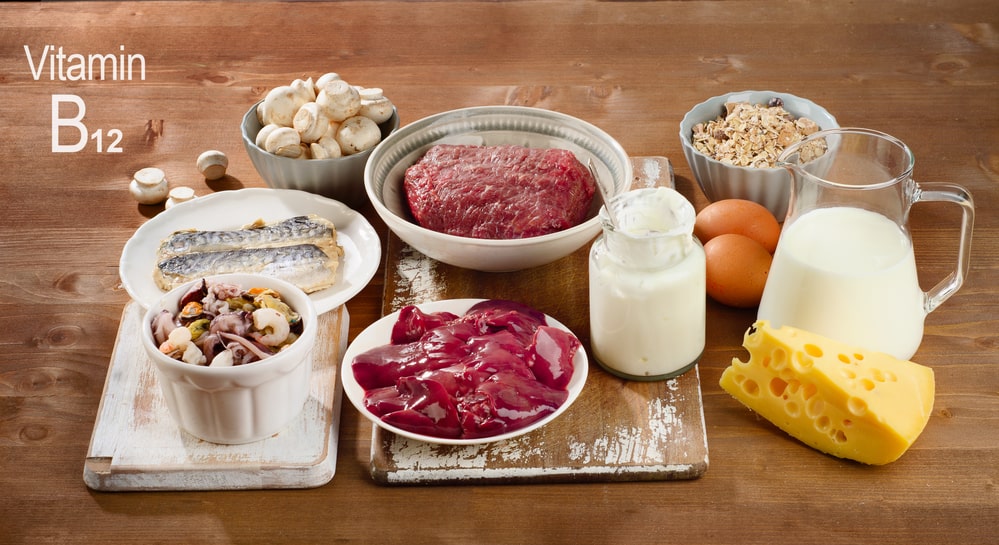
Your nervous system will undergo a lot, to say the least during labor and delivery. Having a baby can be indescribably demanding on your nervous system and you have to support your nervous system to handle it.
Vitamin B12 will help you do this, supporting you throughout the changes in your nervous system that come along with bringing your child into this world. You can supplement this vitamin if you’re plant-based especially since it mostly comes from non-plant-derived sources.
If you do eat meat and don’t solely have a plant-based diet, you can find B12 in the following sources;
- Fish and poultry
- Milk and yogurt
- Liver
Plant-based sources of B12 include;
- Nutritional yeast
- Fortified non-dairy milk – almond, soy, hemp
- Tempeh
- Mushrooms
Nutritious recipes for labor and delivery
I find that the energy of figuring out you’re actually in labor, how it’s progressing, and keying in on your body is overwhelmingly consuming at first. Though, you can make these meals right when you figure out you’ve gone into labor.
If you have a partner that can do this part for you right when you go into labor, that’s even better! You basically just need to prepare for anything, for the unexpected – surprising health issues can arise. Things like bed-rest or being down for longer than you expected to heal a perineal tear are not uncommon.
Your body goes through some really, big, unexpected changes after having your baby. These delicious energy bites are a great option because you can store them in the freezer a few weeks prior to going into labor – having your meals prepped ahead of time is a good idea.
Below are two recipes that are easy to prep, and provide massive nutritious benefits.
Easy No-Bake Energy Bites
View in gallery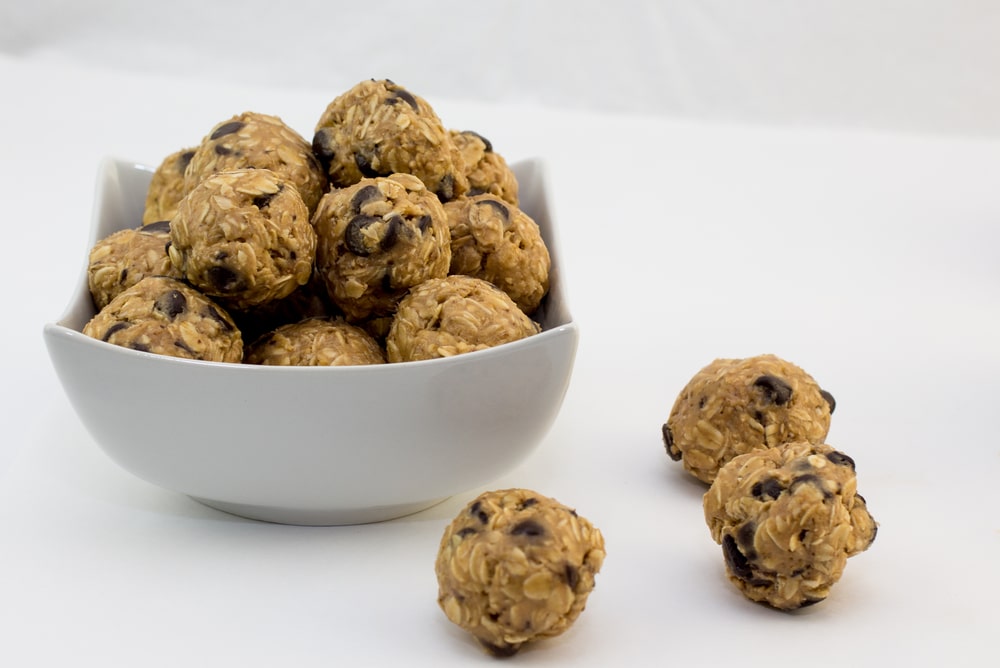
These delicious energy bites are a great option because you can store them in the freezer a few weeks prior to going into labor – having your meals prepped ahead of time is a good idea.
Mother Risings no-bake-bites are filled with nutrient-dense coconut-oil, that helps you as a new mother produce breast milk for your baby.
Healthy fats from coconut oil are unique to others in that they protect against harmful viruses, bacteria, yeast, and parasites.
What better way to help your postpartum body heal and stay in optimal health while doing the hard work of giving birth. In addition, these bites are gluten-free, dairy-free, and they set the stage for an easier labor.
Ingredients you’ll need for no-bake bites;
- About ¾ cup of Medjool dates
- 2tbsp water – 1 tbsp if your dates are dry
- ½ cup creamy peanut butter
- 3 tbsp flaxseed meal
- 2 tbsp cocoa powder
- 1 tbsp coconut oil
- 1 cup of gluten-free oats
Instructions;
- Add dates and water to the food processor.
- Process on high for 2-3 minutes, until dates start to form a paste. If your dates are a bit older and dry(white skin and feel leathery), you may need to add another tablespoon of water to help them blend.
- Then, add the gluten-free oats, peanut butter, flaxseed meal, cocoa powder, and coconut oil to the food processor.
- Pulse until a dough forms.
- Take a rounded tablespoon of dough at a time, and roll with your hands into a ball.
- Enjoy right then and there or freeze for a delightful treat later.
Freezer to crock-pot chili
View in gallery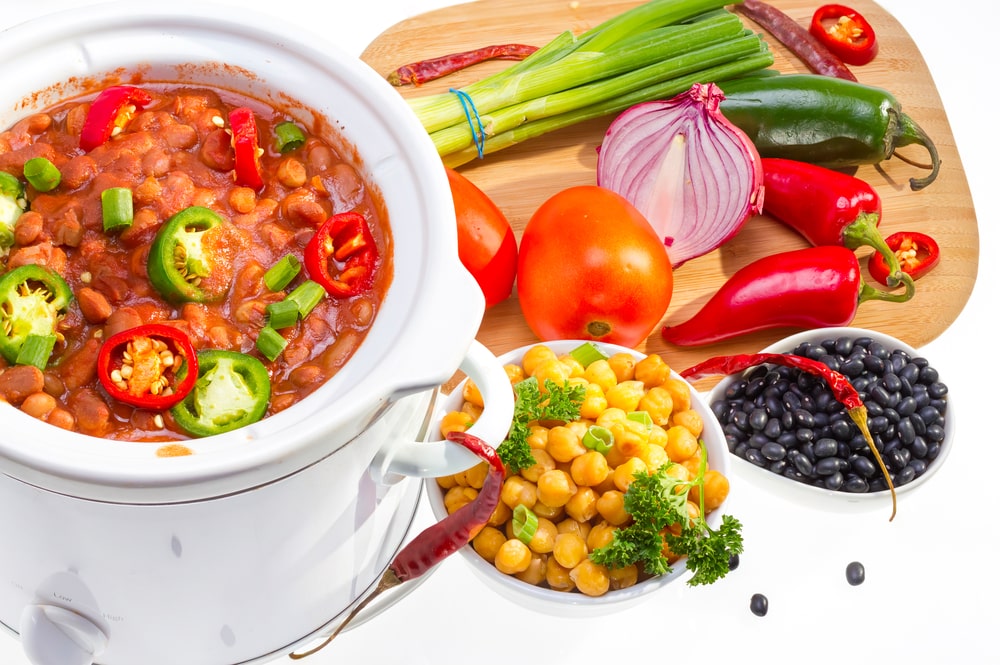
This crock-pot recipe can be prepared and frozen ahead of time, that way you can grab it from the freezer and place it straight into the crock-pot. Eating protein is essential to implement the following weeks after giving birth.
Ingredients:
- 2 cups of vegetable broth(less if you like it less saucy, more chunky)
- 1 chopped onion
- 2 teaspoons of chili powder
- 2 teaspoons of ground cumin
- ½ teaspoon of salt
- 2 teaspoon of vegetarian Worcestershire sauce
- 2 garlic cloves, minced
- 2 cans of black beans (drained)
- 2 cans of pinto, kidney, or white beans (drained)
- 2 cans of diced tomatoes undrained
Optional toppings:
- ½ cup of sour cream
- ½ cup of shredded cheese
- ¼ cup chopped cilantro
- ½ cup avocado
- Tortilla chips
Instructions:
- Label and date gallon-size freezer-safe bags.
- Throw everything except the broth and toppings into freezer bags, lay flat to freeze!
- When you are ready to eat it, put bag contents and the broth in a crockpot on low for 4-6 hours. Check-in a couple of hours since some crock pots run hot.
Top with your favorite toppings and enjoy!
Eating for two and what kind of food to support your breastfeeding journey
After giving birth, breastfeeding and caring for your newborn becomes the most important aspects of your life. You’re now a mother, and having a newborn means your baby will be drinking a whole lot of milk, probably breast milk.
View in gallery
One of the great wonders of breastfeeding is the fact that your breast milk will contain all of the necessary nutrients to help your baby grow.
For instance, even if you don’t get enough calcium in your diet – your baby will still receive enough calcium through breastmilk consumption.
That said, even though your baby is getting enough nutrients from your milk regardless of your dietary intake – it’s still a great idea to eat a well-rounded diet for yourself.
You’ll be better off in the long run if you can support your body in the best possible manner throughout your time breastfeeding.
With the proper nutrients and calories in your diet, you’ll feel better mentally, emotionally, and of course, physically.
Some women might experience low breastmilk supply at any time in their journey breastfeeding – or maybe it’ll be difficult getting enough for your baby in the very beginning – or maybe you just feel that you want to get ahead of the game and ensure you’re doing everything you possibly can to initiate a solid foundation for breastfeeding your newborn.
After all, it is a good idea to be prepared for anything, and especially implementing foods that will support your breastfeeding journey short-term and long-term.
Foods to eat that will encourage adequate milk flow the first few weeks after giving birth
Aim to implement the following foods to provide a well-balanced diet for yourself and your newborn baby.
Keep in mind that certain foods will affect the way your baby feels – if your baby has a sensitive stomach to dairy, you might notice that your baby gets gas and bloating when you consume dairy products.
If your baby breaks out in a rash, vomits, or seems super cranky after a feeding in which you consumed a certain food beforehand – try cutting that food out of your diet for a few weeks to see if there is any difference in the way your baby reacts to your milk.
Nuts and seeds are wonderful for encouraging breastmilk supply
Your milk will come out in various textures, tastes, and thickness depending on what you have eaten – nuts and legumes are a superfood for breastfeeding mothers that will increase the creaminess of breastmilk.
Babies who eat thick-creamy milk are happy and they tend to stay satisfied for hours from a single feeding. AKA – you want your milk to be thick, creamy, and filled with nutrients. Nuts and legumes are full of calcium and protein.
All of which mother and baby need for optimal health. Aim to eat almonds or drink almond milk by the glass or handful – this will help your bones and teeth thrive even during a time when your breastmilk is supplying loads of calcium to your baby.
It’s an important time to eat a lot of nuts and seeds for calcium when your body is already giving so much calcium from your body to your baby through milk, regardless if you are eating calcium-rich foods or supplementing to replace it.
Oatmeal and whole grains is a wonder food for breastfeeding mothers
View in gallery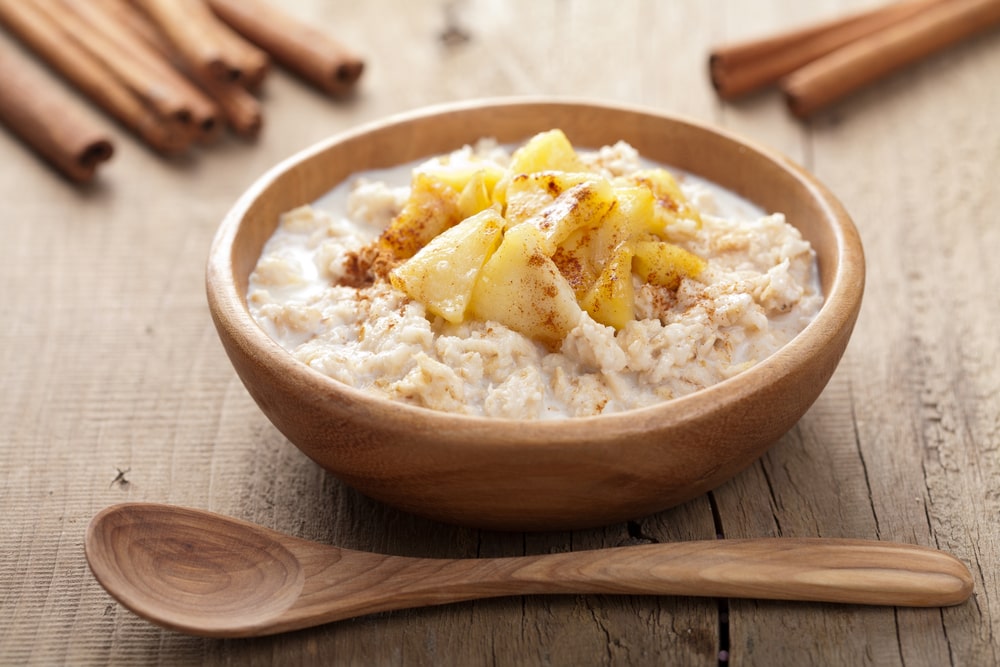
The best part about oatmeal isn’t the way it supports breastfeeding(even though that’s amazing too!) but it’s the diversity in the many ways breastfeeding mothers can eat it.
You might think you’re getting sick of it, and then boom you figure out another way to eat it. The options of the various way’s to consume your favorite bowl of oaty-oats can be customized to your desired taste each day – the options are truly endless.
Berries, dried fruits, those nuts or seeds you need to get in – throw it in the oatmeal. Breakfast, lunch, dinner – oatmeal – okay one day you might want to switch it up, but you get my point.
Oatmeal is claimed to be a breastmilk powerhouse food for a few reasons; its soothing properties work wonders for the let-down phase of breastfeeding, and it’s a great source of iron.
Oatmeal can be consumed in the form of good ol’ fashioned oats or oat milk, so if you aren’t trying to down a bunch of thick oatmeal then have a glass of oat milk instead.
In addition to oatmeal, whole grains should be consumed as often as possible too – foods like wheat, barley, pasta, and brown rice are all complex carbohydrates that will help you stay full longer.
One of the biggest problems during breastfeeding is always being hungry. You might not see this as a problem if you love to eat but think of that desire x10.
Eating a full-sized serving of brown rice for dinner helps mothers feel good and maintain healthy blood sugar the next morning when babies love to eat a lot more than usual.
If you aren’t vegan try to include beef, salmon, sardines, and eggs in your meal planning
Beef is has a lot of zinc, iron, and high-quality protein that you might have a hard time getting elsewhere.
If you can include hamburgers in your meals the first few weeks after delivering since you lose some amount of blood after delivering your baby – you’ll probably feel a lot better than otherwise.
View in gallery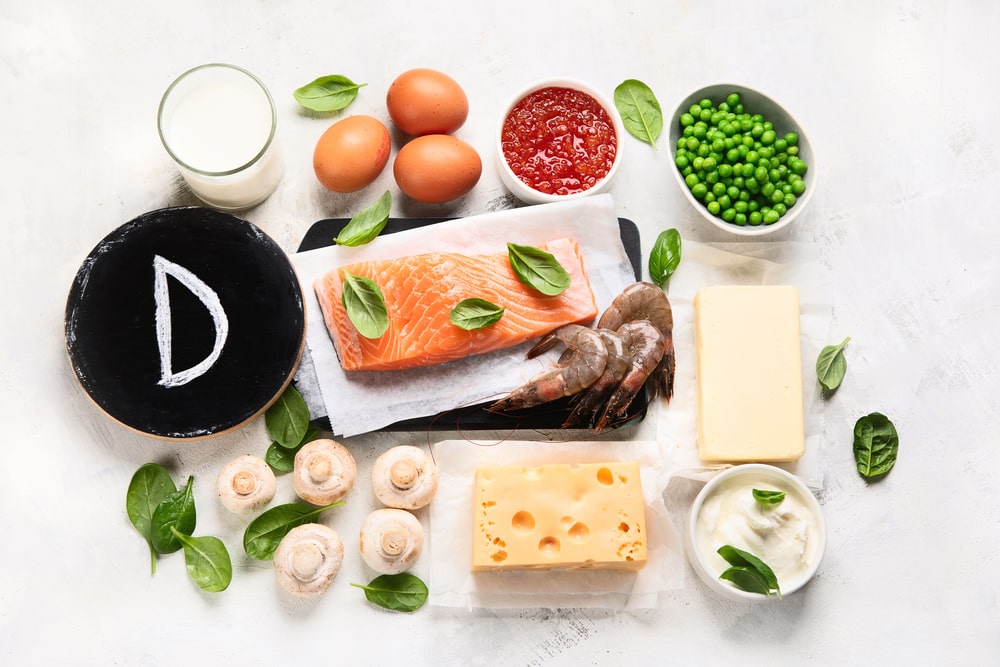
Sardines and salmon have natural properties of Vitamin D inside of them – this is important when you can’t get outside in the sunshine to accumulate vitamin D – the weeks following giving birth.
Food sources of Vitamin D like sardines and salmon, offer food for the brain too called omega-3-fatty acids.
You’ll need to include these important properties into your diet as they help combat postpartum depression which overall helps you maintain your breastfeeding journey with your baby.
A baby’s developing nervous system requires large amounts of DHA to develop properly, which is just one more season to include salmon and sardines into your diet.
When deciding on which beef, salmon, or sardines to buy – look for local grass-fed or farm-raised animal products.
Salmon, beef, and sardines that aren’t raised organically are known to contain antibiotics and hormones – all of which a postpartum mother doesn’t need any more of.
Consume 500 extra calories a day when breastfeeding and around 80 ounces of water a day to create a continuous breast-milk supply
Now that you know which food types to include in your diet to support your breastfeeding, let’s discuss what in reality inhibits or allows your breastmilk to flow or not – hydration and caloric intake.
That’s right, you can do everything right in regards to the food types you choose to eat, but if you aren’t drinking enough H20 then your breastmilk can be significantly slowed in production.
Aim to drink 10- 8oz glasses of water or even a bit of juice a day, sparkling water drinks like la Croix are great for breastfeeding mothers who don’t have a taste for regular water.
Getting enough liquids in your diet is crucial to producing enough milk for your little one, in addition, reduce your coffee intake and amp up the beneficial liquids instead.
Another thing that might cause your breastmilk to slow in production is the number of calories you’re taking in per day.
If you aren’t getting enough food substance in your diet regardless of what kind it is or where it came from, you may be inhibiting your body’s ability to produce the necessary amount to keep your baby happy.
View in gallery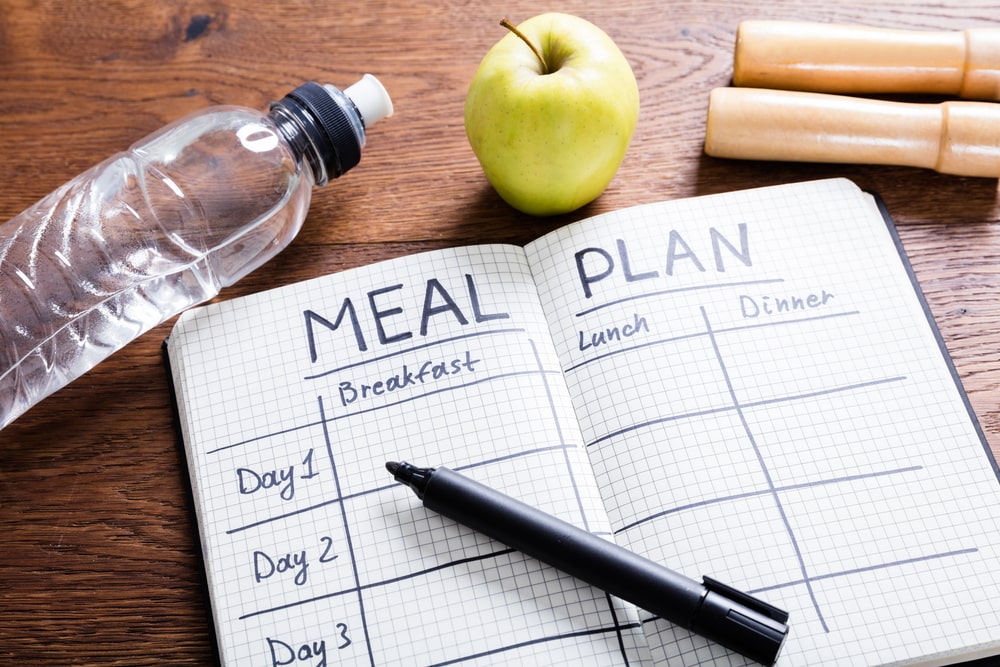
In Conclusion
Meal planning and planning the space to have your homebirth seemingly go hand-in-hand.
You’ll find that at the end of your pregnancy your nesting intuition will kick into overdrive and you’ll suddenly need to have everything ready for when it’s time to greet your baby.
You’ll just start feeling this extra bit of energy to get thing’s done, this is the perfect time to prepare some freezer-safe meals, and a comfortable place where you plan to go through the motions of labor and where you will actually deliver your baby.
Don’t try to get it all done in one day either, since heavy cleaning can exhaust you and can even throw you into having early labor contractions.
Start executing your plan for your home birth space and meal preparation about a month and a half in advance.
If you do it this way, you’ll simply need to touch up your home every few days with light cleaning instead of having to do some deep cleaning when you actually could go into labor.
I know nesting has brought me to some pretty heavy cleaning, so it’s important to resist any urge to do the cleaning that could hurt your back or your abdomen.
Breathing in the chemicals from cleaning products is also a no-go, try to purchase plant-based cleaning products when possible.
Avoid breathing in bleach at all costs, your body is much more sensitive at the end of pregnancy, and if you’re unsure about a product then just wait it out until you can ensure a safe option.
One good trick is to use soap nuts on your home since they are highly antimicrobial and antibacterial they are a great option for an organic cleaning solution.
Now that you know the nitty-gritty details of your home preparation for a homebirth, the next step to implement is having fun.
Remember to smile and have fun along the way! A happy healthy mamma equals productive smooth labor and delivery of her baby – relax and enjoy the last few months before giving birth to your bundle of joy.
Sources
Make Your Breastfeeding Diet Work For You and Your Baby





